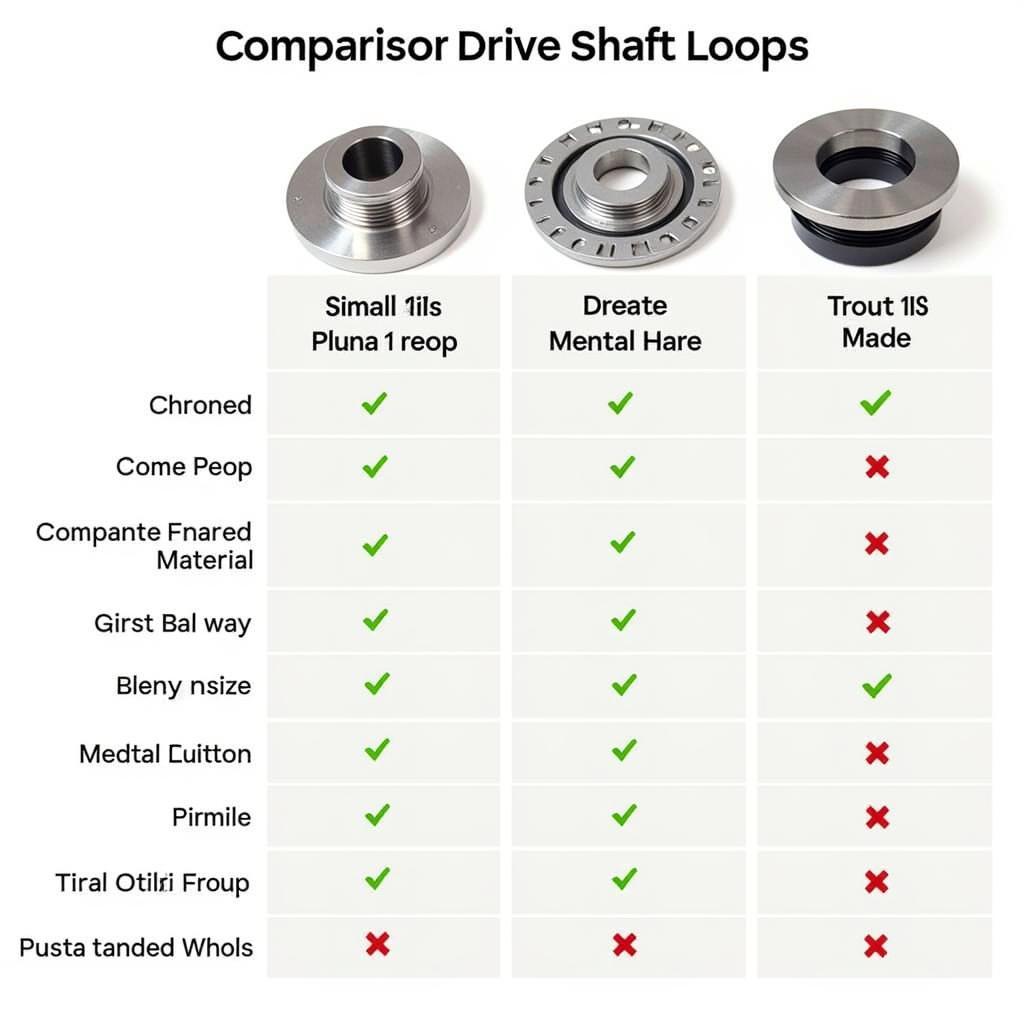Understanding the importance of a drive shaft loop, especially when dealing with powerful US car models, is crucial for both safety and performance. Whether you’re a seasoned mechanic or a car enthusiast working on your own project, this guide provides a detailed overview of Us Car Tool Drive Shaft Loops, their applications, and why they are an essential component for many vehicles.
Why Use a Drive Shaft Loop on Your US Car?
Drive shaft loops are designed to prevent a catastrophic failure of the drive shaft. In the event of a universal joint (U-joint) failure or other damage, the loop prevents the drive shaft from whipping around uncontrollably. This is especially important in high-performance US cars with powerful engines that generate significant torque, potentially causing the drive shaft to rotate violently if it becomes disconnected. This uncontrolled movement can cause extensive damage to the undercarriage, fuel lines, and even the vehicle’s floor pan, posing a significant safety risk to the driver and passengers.
Furthermore, many racing organizations mandate the use of drive shaft loops for safety reasons. Even if not required for street use, a drive shaft loop is a worthwhile investment for any high-performance US car, offering peace of mind and added protection.
Choosing the Right Drive Shaft Loop
Selecting the correct drive shaft loop for your specific US car model requires careful consideration. Factors such as drive shaft diameter, chassis design, and available mounting points all play a role.
- Diameter: The loop must be the correct size to snugly fit around the drive shaft without restricting its movement. Too loose, and it won’t be effective; too tight, and it could interfere with the drive shaft’s operation.
- Material: Most drive shaft loops are made from heavy-duty steel, but the specific grade and thickness can vary. Look for loops constructed from high-quality materials that can withstand the stresses of high-performance driving.
- Mounting: Ensure the loop is mounted securely to the chassis using appropriate hardware and techniques. Improper installation can compromise the loop’s effectiveness and even create new safety hazards.
 Drive Shaft Loop Types and Materials
Drive Shaft Loop Types and Materials
Installing a Drive Shaft Loop
Installing a drive shaft loop requires mechanical knowledge and the right tools. While it’s possible to install one yourself, it’s often best to have a qualified mechanic perform the installation to ensure it’s done correctly. They will have the experience and expertise to handle any unforeseen issues. Consider using a 76 extra length long arm car opening tool for accessing tight spaces during installation.
“Proper installation is key,” says renowned automotive engineer, Robert Johnson. “A poorly installed drive shaft loop can be just as dangerous as not having one at all.”
What if I Don’t Have a Drive Shaft Loop?
Driving a high-performance US car without a drive shaft loop increases the risk of a serious accident in the event of drive shaft failure. The consequences can be devastating, including loss of control of the vehicle and potential injury.
How Do I Know if I Need a Drive Shaft Loop?
If you’re unsure whether your US car requires a drive shaft loop, consult your vehicle’s owner’s manual or a qualified mechanic. They can assess your vehicle and recommend the appropriate course of action. Investing in a drive shaft loop is a small price to pay for the added safety and peace of mind it provides.
Conclusion
A US car tool drive shaft loop is a vital safety component for many high-performance vehicles. It provides an essential layer of protection against the potential dangers of a drive shaft failure. By understanding the importance of this component and choosing the right loop for your vehicle, you can ensure a safer and more enjoyable driving experience. Consider using a 76 extra length long arm car opening tool during inspection or maintenance.
FAQ
- What is the primary purpose of a drive shaft loop? To prevent the drive shaft from whipping around in case of failure.
- Are drive shaft loops required by law? Not for street use in all states, but they are often mandatory in racing.
- Can I install a drive shaft loop myself? It’s recommended to have a qualified mechanic perform the installation.
- What materials are drive shaft loops typically made of? Heavy-duty steel.
- How do I choose the right size drive shaft loop? Based on the diameter of your drive shaft.
- What happens if a drive shaft breaks without a loop? It can cause significant damage and pose a safety risk.
- Where can I purchase a drive shaft loop? From automotive parts stores or online retailers.
Need further assistance? Contact us via WhatsApp: +1(641)206-8880, Email: [email protected], or visit us at 910 Cedar Lane, Chicago, IL 60605, USA. Our customer service team is available 24/7.

Leave a Reply